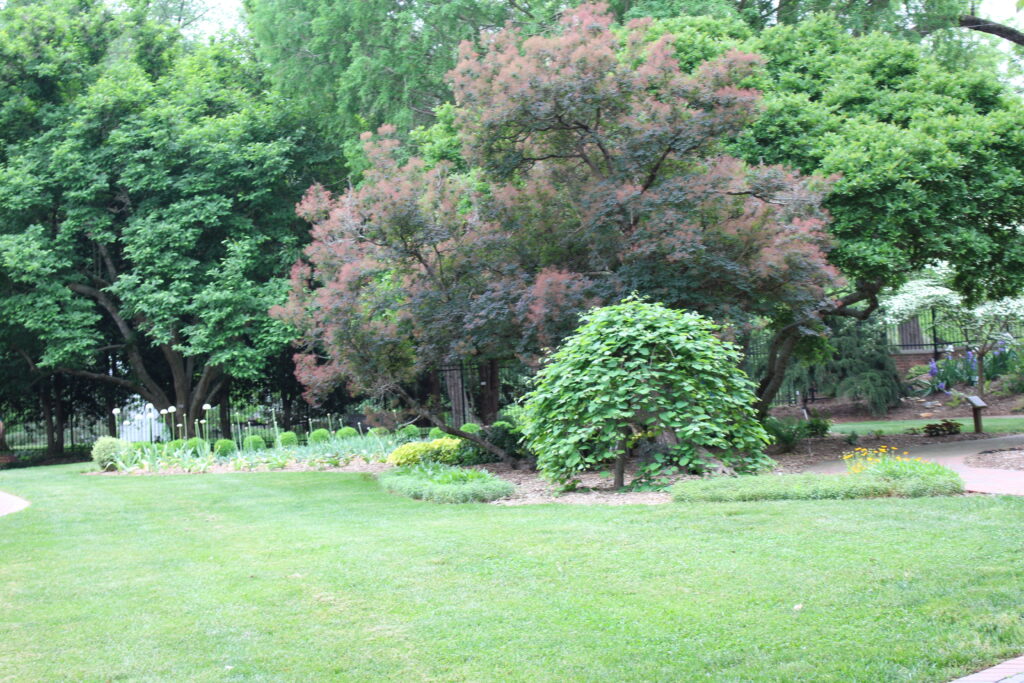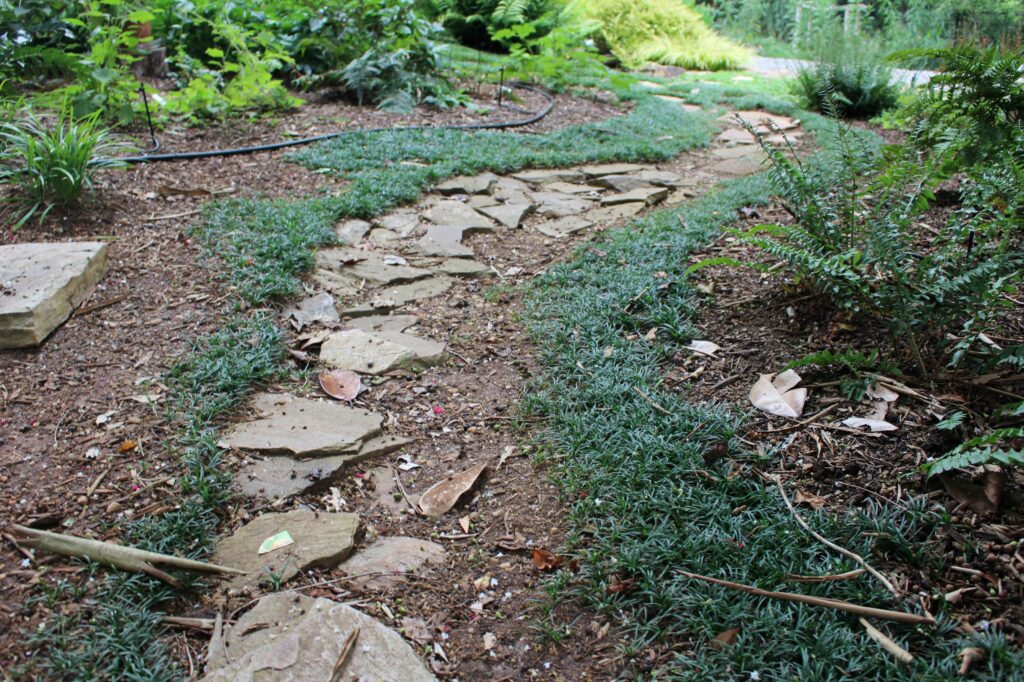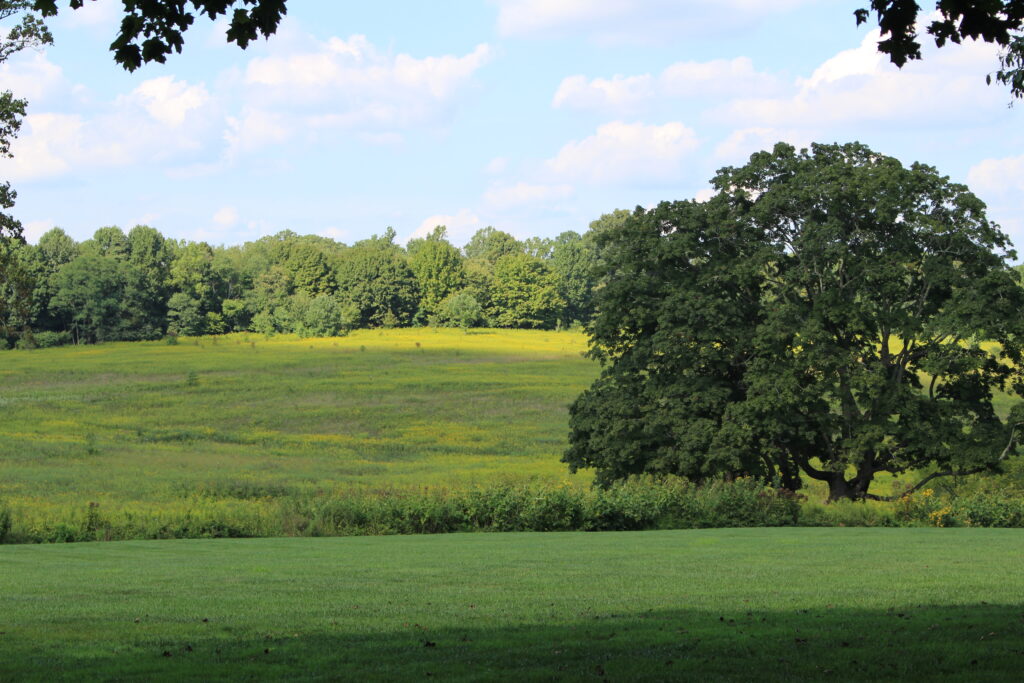Lawn Alternatives – Replacing or Reducing the Size of Your Lawn
go.ncsu.edu/readext?762483
en Español / em Português
El inglés es el idioma de control de esta página. En la medida en que haya algún conflicto entre la traducción al inglés y la traducción, el inglés prevalece.
Al hacer clic en el enlace de traducción se activa un servicio de traducción gratuito para convertir la página al español. Al igual que con cualquier traducción por Internet, la conversión no es sensible al contexto y puede que no traduzca el texto en su significado original. NC State Extension no garantiza la exactitud del texto traducido. Por favor, tenga en cuenta que algunas aplicaciones y/o servicios pueden no funcionar como se espera cuando se traducen.
Português
Inglês é o idioma de controle desta página. Na medida que haja algum conflito entre o texto original em Inglês e a tradução, o Inglês prevalece.
Ao clicar no link de tradução, um serviço gratuito de tradução será ativado para converter a página para o Português. Como em qualquer tradução pela internet, a conversão não é sensivel ao contexto e pode não ocorrer a tradução para o significado orginal. O serviço de Extensão da Carolina do Norte (NC State Extension) não garante a exatidão do texto traduzido. Por favor, observe que algumas funções ou serviços podem não funcionar como esperado após a tradução.
English
English is the controlling language of this page. To the extent there is any conflict between the English text and the translation, English controls.
Clicking on the translation link activates a free translation service to convert the page to Spanish. As with any Internet translation, the conversion is not context-sensitive and may not translate the text to its original meaning. NC State Extension does not guarantee the accuracy of the translated text. Please note that some applications and/or services may not function as expected when translated.
Collapse ▲This article was compiled by Extension Master Gardener℠ Volunteer Nancy Goodrum.
Have you ever thought about why you have a lawn?
For several generations, traditional homes have been surrounded by grassy lawns. They can be beautiful! A lawn frames your home. It provides a place for children and/or pets to play. Most neighborhoods expect homeowners to have and to maintain their lawn; homeowner associations (HOAs) usually require it.
Why consider replacing or reducing the size of your lawn?
Lovely as a grassy lawn can be, it does require regular maintenance – mowing, edging, watering, and fertilizing. Some homeowners would like to reduce that maintenance. Others want to reduce their use of fertilizer, pesticides, and herbicides. Still, others seek to add ecological diversity to their property. Lawns just refuse to grow well in shade or in soggy wet areas, and some steep or rocky areas make mowing a nightmare.
How do you start?
Pick a small area. Look for a section of your yard where grass is more difficult to grow, like under a tree. As plants in the landscape mature, some areas that were once sunny can become shaded. Don’t fight it! Replace the struggling grass with something else. (More on plant options later!) Consider the strip between the sidewalk and the street. Maybe you have a side yard where growing grass or mowing the grass is a challenge. Remove the remaining grass and replace it with other plants you will enjoy. Consider removing grass from the corners of the yard. Turn those corners into curved beds that will make mowing easier and provide planting space for something interesting.

Landscape beds can be expanded to reduce the size of your lawn. Consider starting with shady spots where it is hard to get turfgrass to grow.
What can be planted instead of turfgrass?
There are many options! One of the simplest transitions is to use a groundcover. Groundcovers are plants that are naturally low-growing and never need mowing.
- In humus-rich, moist, well-drained soil with sun or partial shade, try Lysimachia nummularia (Creeping Jenny), an herbaceous perennial. It is low growing to 6 inches tall and spreads by creeping stems which root at the nodes to 1 foot wide to form a dense groundcover.
- Try Pachysandra in a shady area. It’s an herbaceous perennial evergreen in the boxwood family. This plant does best in part shade to full shade and is intolerant of full sun as foliage yellows/bleaches in full sun or high wind. Plants thrive in sun-dappled shade under large trees.
- If you want a grassy look, try planting mondo grass (Ophiopogon). There are several varieties. It looks similar to Liriope (monkey grass) but has thinner, more delicate leaves. Like Liriope, mondo grass is evergreen that forms a mat by runners. It prefers shade and moist, well-drained soils, but is it sun tolerant. It does require mowing, but only once each year!

Mondo grass is a good option for replacing lawn in a shady spot.
If you are adventurous, you could try planting some ornamental grasses. These are tall-growing grasses that need no mowing.
- For show-stopping fall color, consider Muhlenbergia capillaris or Muhly grass. This grass can reach a height of 4 feet and a width of 3 feet. It has little to no insect or disease pests and is highly resistant to deer grazing. Muhly grass tolerates heat, humidity, drought, poor soil, and is highly salt tolerant.
- Miscanthus sinensis ‘Hinjo’ or Zebra grass is another attractive option. There are numerous other cultivars and they have virtually no disease or pest problems. It is a clumping grass that grows up to 12′ tall. Some cultivars are considered weedy in the southeast.
You could also consider pollinator plants that attract and support insects and birds, or edible plants.
For many more planting ideas, go to the North Carolina Extension Gardener Plant Toolbox.
If you have a great deal of shade and moss is already growing in an area, think about adding to the moss and establishing a moss garden. Check the website for Mossin’ Annie. Even if you don’t plant moss, you’ll enjoy her videos!
Another option is to just stop mowing some areas of your yard. Let the weeds take over! When it gets too tall or unsightly, cut it back. Some “weeds” are lovely and support a variety of wildlife. Some homeowners are planting a mixture of fescue and clover. Learn more about this option from Maryland Cooperative Extension.
If you are very committed to replacing your lawn you can think about establishing a meadow. It will take several years! Maryland Cooperative Extension has a publication about establishing a meadow.

A natural meadow can take the place of a traditional lawn.
How can a lawn be removed before planting an alternative?
There are several methods for removing grass.
- You can cover the area with newspaper and/or cardboard, then cover that layer with 8 inches of mulch to block air and sunlight.
- You can cover the area with plastic sheeting, sealing the edges to retain heat. Leave the plastic in place until the grass is dead.
- You can simply dig up the grass and replace it.
Click for more information about removing your existing grass, including specific instructions and photographs. Another good source of information from the Nature Conservancy and Cornell University.
Resources
Below is a list of other resources that can help you get started in reducing or replacing your lawn:
Chatham County – Lawns & Lawn Alternatives
University of Maryland – Lawn Alternatives




